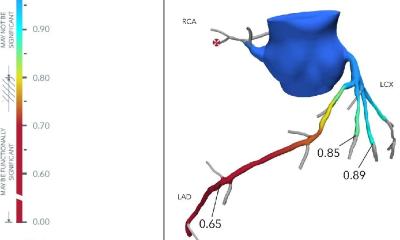New twelve-month data for Nevo stent
At 12 months the NEVO Sirolimus-eluting Coronary Stent has continued to demonstrate excellent safety and efficacy outcomes compared to Taxus Liberte according to new data presented today from the NEVO RES-I clinical trial. These results were presented as a late breaking trial at EuroPCR, the leading medical conference in Europe for physicians specializing in interventional cardiovascular medicine.
Through 12-month follow-up, there have been no episodes of stent thrombosis reported in the NEVO arm, whereas two such events have been reported through 12 months in patients treated with the Taxus Liberté stent, and a third event in this arm was reported after 13 months. Additionally there have been no cases of cardiac death or out-of-hospital myocardial infarction (MI) for patients receiving NEVO.
While the trial was not powered for clinical endpoints and thus no statistically-significant differences were observed, the rates of death, MI, the need for repeat revascularization, and the occurrence of stent thrombosis numerically favored NEVO™ over Taxus Liberté to an even greater degree at 12 months than they had at six months. Similar trends were observed in the pre-defined subgroups of patients with diabetes and patients with lesion lengths less than or greater than 20 mm.
At the six-month primary endpoint of this prospective, randomized clinical trial, NEVO was reported to be superior to Taxus Liberté in in-stent late lumen loss, which is tissue growth within a stent. Specifically, in-stent late lumen loss was reduced by 64 percent in the NEVO arm as compared to the Taxus Liberté arm (0.13 mm compared to 0.36 mm, p<0.001).In-stent late lumen loss reduces the diameter of the lumen thus restricting blood flow through the stent and can potentially lead to major adverse coronary events, also known as MACE. NEVO™ was also superior in reducing restenosis, a reblockage in a stent. Angiographic restenosis was reduced 86 percent (1.1 percent in the NEVO arm compared to 7.8 percent in the Taxus Liberte arm, p=0.002).
“These data suggest we may be looking at a significant advance in treatment options for coronary disease that allows precise stent-based delivery of drug and is capable of reducing long-term safety complications,” said Alexandre Abizaid, MD, the chief of coronary interventions at the Institute Dante Pazzanese of Cardiology, Sao Paulo, Brazil and visiting professor of medicine at Columbia University, New York, USA. “Since stent thrombosis and the drugs required to protect against it are such significant clinical issues, it is particularly pleasing to see the excellent safety outcomes associated with NEVO maintained over 12 months. These results also suggest the need for further study of whether abbreviating or interrupting antiplatelet therapy with this treatment would result in fewer adverse events than would currently be expected in drug-eluting stent patients.”
“The additional positive 12-month results from the NEVO RES-I trial are extremely encouraging as they suggest that NEVO could offer improved patient outcomes in the treatment of coronary artery disease,” said Campbell Rogers, M.D., Chief Scientific Officer and Global Head, Research and Development, Cordis Corporation. “NEVO is a critical component of our commitment to providing innovative new products, which are transforming expectations for patients and practitioners in the field of interventional cardiology.”
NEVO RES-I Study Overview
The NEVO RES-I study was a randomized, multi-center comparison of NEVO to the Taxus Liberte Stent in de novo, native coronary artery lesions. The study involved 394 patients at 40 sites throughout Europe, South America, Australia and New Zealand. Patients underwent angiographic follow-up at six months, received clinical follow-up at 30 days and six and 12 months, and will be followed annually for the next five years. The primary endpoint was in-stent late loss at six months. Key secondary endpoints include target lesion failure, target vessel failure, MACE, stent thrombosis, target lesion revascularization, target vessel revascularization, and angiographic in-stent and in-segment binary restenosis at six months.
About NEVO
NEVO, the first sirolimus-eluting stent utilizing RES TECHNOLOGY, is an open cell, thin strut, cobalt chromium design that incorporates hundreds of small reservoirs filled with a recessed drug-polymer matrix. This is designed to minimize polymer contact with the vessel wall at implant, and allow transformation from a drug eluting stent into a bare metal stent in as little as 90 days. Currently available drug-eluting stents have surfaces completely coated in drug and a permanent polymer. Cordis submitted NEVO for CE-marking in March 2010.
The NEVO Sirolimus-eluting Coronary Stent is an investigational device. It is not approved or available for sale in any market.
26.05.2010









